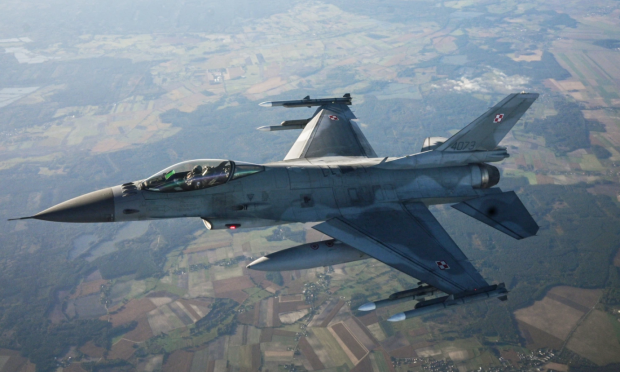With Ukraine constantly pushing for F-16 fighter jets, military officials and analysts in the West have expressed their reservations. Apart from the obvious fear of escalation with Russia, there is concern that these aircraft may indeed become an easy target for Russian missiles.
Ukraine has once again renewed its objections to F-16 fighter jets, with Foreign Minister Dmytro Kuleba telling a meeting of the EU's Foreign Affairs Council that the wisest investment in the long-term security of the European continent would be to provide Ukraine with with modern fighter jets.
However, a popular air warfare expert has noted that if Ukraine ever receives F-16 fighters from the US, the aircraft may not be very durable. The F-16 needs purpose-built air bases since it is so sensitive, and Russia may be able to locate and attack those locations. According to Justin Bronk, an air warfare expert with the Royal United Service Institute (RUSI) in Britain, the F-16 has a fairly large air intake under the nose that sucks everything off the ground directly into it.
In general, F-16s need very clean, very well-maintained air bases. Because the F-16 is built to have an excellent thrust-to-weight ratio and "there's no more weight in the jet than it needs to be," Bronk noted, adding that it has "fairly light" landing gear. However, he said Russian and Ukrainian air bases and airfields are largely primitive and unsuitable for the F-16 Fighting Falcon or some other Western fighters.
"You'd have to do a lot of work to get these Ukrainian, old Soviet design runways in a clean enough condition for an F-16 to use without a high risk of foreign object debris (FOD) getting in and damaging the engines," said Bronc. He said many Ukrainian airfields are too small for an F-16 to land while fully equipped.
Bronk also warned that once the location of these air bases where Russian F-16s are stationed is determined, their troops could use their limited stockpile of long-range missiles to strike those bases and destroy the F-16s while they are still parked on the ground.
"All of Ukraine's air bases are in close proximity – because the entire country is accessible – to Russia's ballistic missiles and cruise missiles," Bronk said. Although Russia's missile stockpile is dwindling, any Ukrainian F-16 fleet can be neutralized with just a few missile launches against a few locations.
Ukraine has infrastructure for F-16
Contrary to Bronk's observation, Ukrainian Air Force spokesman Yuriy Ikhnat said Ukraine already has the necessary infrastructure to develop and operate Western fighter jets such as the F-16. "There is no problem with the infrastructure. The US Air Force has already landed here, including F-15s and F-16s. These planes were at our airports in 2012 and 2018. We have dozens of different airports – operational, tactical – that can be used for these types of planes,” he said.
The spokesman also noted that there are also sections of Ukrainian highways in Ukraine where aircraft could land. "This is a common practice in all countries of the world. In a country at war, infrastructure must be built. I'll let you in on a little secret – it's been a long time coming,” he added.
Ukrainian Air Force Commander Serhiy Holumbtsov said on March 20 that Ukrainian pilots could learn to fly the F-16 in as little as six months. In early March, media reports said two Ukrainian pilots were in the US for an assessment on how long it might take them to train to fly the aircraft.
As Poland and Slovakia earlier promised MiG-29 fighter jets to Ukraine, Russia threatened to destroy all fighter jets delivered to Kiev by NATO countries. This threat is further enhanced when it comes to the state-of-the-art and battle-hardened F-16 Fighting Falcon, a small, light fighter first developed in the 1970s. It entered service in 1979 and has seen extensive deployment by the Air Force of the US during the wars in Afghanistan and Iraq.
The Russians know that Western-grade fighter jets with better avionics and weaponry, compared to legacy Ukrainian Soviet jets, can deter Russia to some extent. In an interview with the daily military website Voennoe Delo, Russian reservist pilot Vasily Dadikin said the F-16 could pose a serious challenge to the Russian Aerospace Force's (VKS) Su-35 and MiG-31 aircraft.
"The F-16 is a 4th generation fighter. It will be very durable against our Su-35s, Su-35SMs and MiG-31s," said Dadikin, adding that the MiG-31s and Su-35s are well equipped to deal with the F-16s if they do encounter them in the skies above from Ukraine.
It is more than a year of fighting and there has been limited use of air power, with neither side able to establish air superiority. Despite the effectiveness of Russian air defenses, Moscow has been reluctant to risk using its air force outside the front lines because it also wants to limit casualties. For its part, Ukraine believes that the situation could be reversed with access to F-16 fighter jets.



